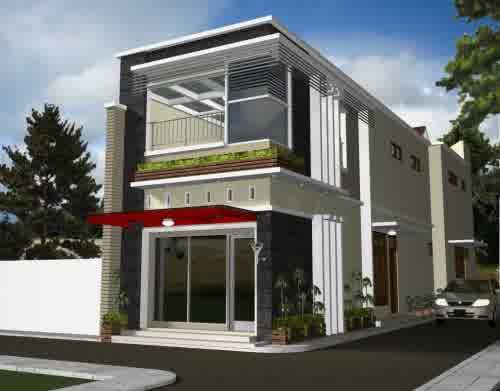
Shophouses in Indonesia Combining the Old with Modernity
In the vast archipelago of Indonesia the shophouses, commonly called ‘ruko’ are a testimony to the rich culture of Indonesia and thriving economic life. They are often distinguished by their narrow facades and a variety of stories, aren’t only beautiful architectural marvels. They are also a symbol of the unique mix of Indonesian culture and contemporary trade. From the quaint streets of Yogyakarta and the bustling streets of Jakarta Shophouses provide beautiful images of Indonesian lifestyle, in which business, family and tradition blend seamlessly.
The roots of Indonesian shophouses are found in the time of colonialism, incorporating influence of European, Chinese, and indigenous architectural styles. The fusion can be seen in the distinct characteristics of their buildings: shops on the ground floor, a space for living and business rooms above. The design isn’t just something to do with convenience, it is a reflection of Indonesian values of family as well as social structures, in which the distinction between work and home is frequently blurred. The floor below is a hive of commerce during the day while the upper floors are awash with the warm atmosphere of family life in the evening. In the past, shops have changed to adjust to modern urbanization and demands, but the fundamentals of their style remains the same.
A stroll through the Indonesian area lined with shops will take you into the past. The exteriors, usually decorated with intricate carvings and vivid shades, tell stories from the past and future. Some older neighborhoods shops have kept the original shutters made of wood with tiled roofs as well as intricate facades that are reminiscent of the Dutch colonial time. They aren’t only buildings, they’re an artistic representation of the nation’s past, its culture, as well as the entrepreneurial spirit of the people. They are proud relics from the past and continue to meet the needs of the economy that are present.
But, the path of Indonesian shophouses is not free of challenges. Rapid growth and urbanization pose threats to their existence. In a lot of cities, historic shops are becoming contemporary high-rises and complexes. Conservation efforts are being undertaken in a number of areas, with the goal to protect these historic structures as well as preserve the historical structure in Indonesian cities. The efforts usually involve revitalising the older districts, while making sure that shophouses keep up with the current standards of life and business. The aim isn’t just to protect a building, however to protect a style lifestyle that was essential for Indonesian society for many generations.

The flipside is that the flexibility of shops has resulted in the resurgence of their popularity. Recently, there has increased appreciation for the aesthetic and historical significance of these structures. Modern developments incorporate the concept of a ruko, mixing classic designs and modern conveniences. The modern-day designs of shophouses are now an emblem of Indonesia’s ability to maintain a balance between progress and heritage. They are a mix of commercial and residential spaces yet with modern layouts and facilities that cater to the requirements of the contemporary Indonesian family and the businessman.
Shophouses’ significance goes beyond the design and function. They’re an integral part of Indonesian society and symbolize the spirit of community, strength and entrepreneurial spirit of its inhabitants. Early in the morning, the streets come to life by the shutters being opened and the smell of street food as well as the bustle of everyday business. In the evening, these places become quiet and peaceful residential spaces. Everyday, these spaces transform into an act of cultural and business that’s been going on for centuries.
Leave a Reply